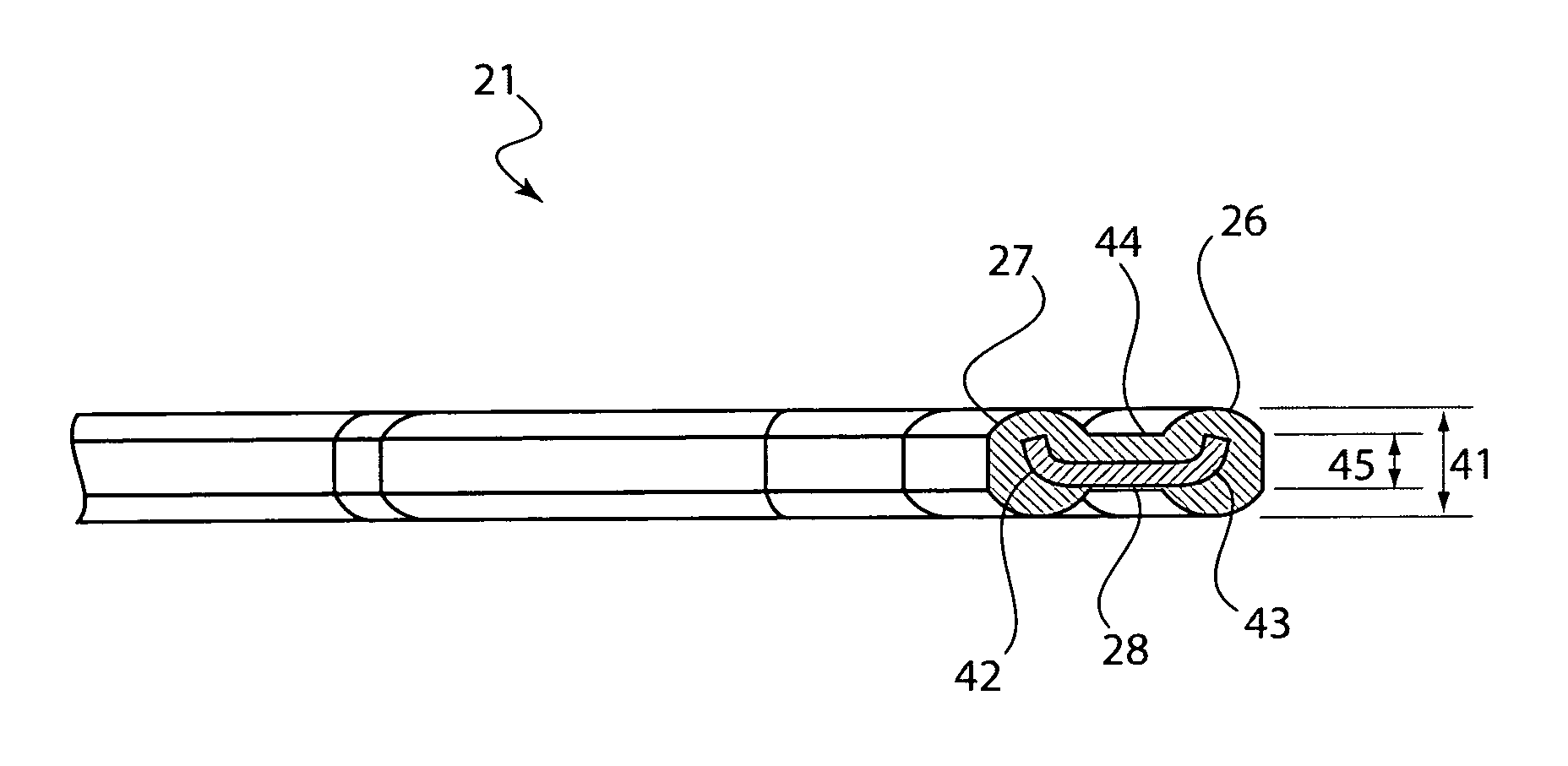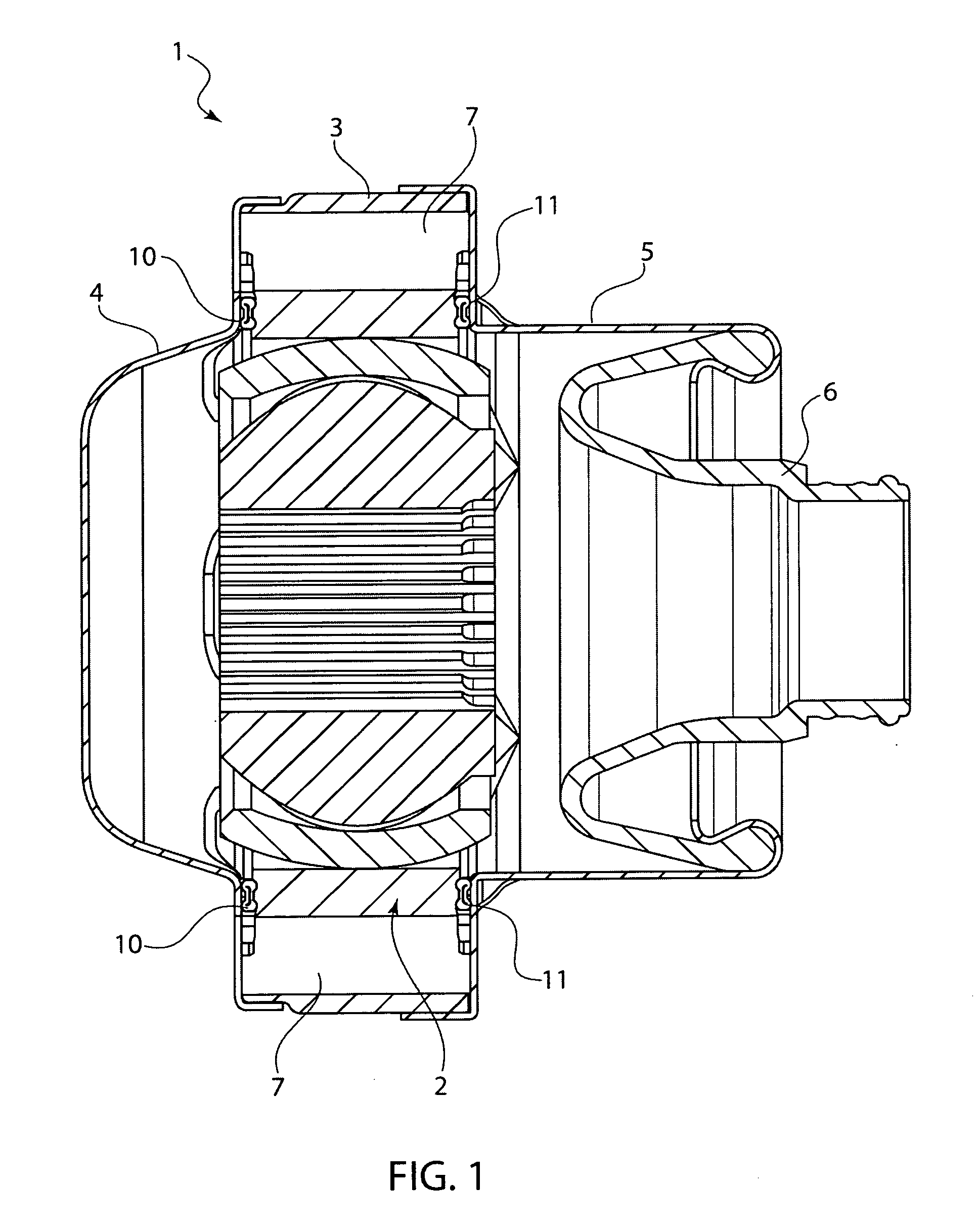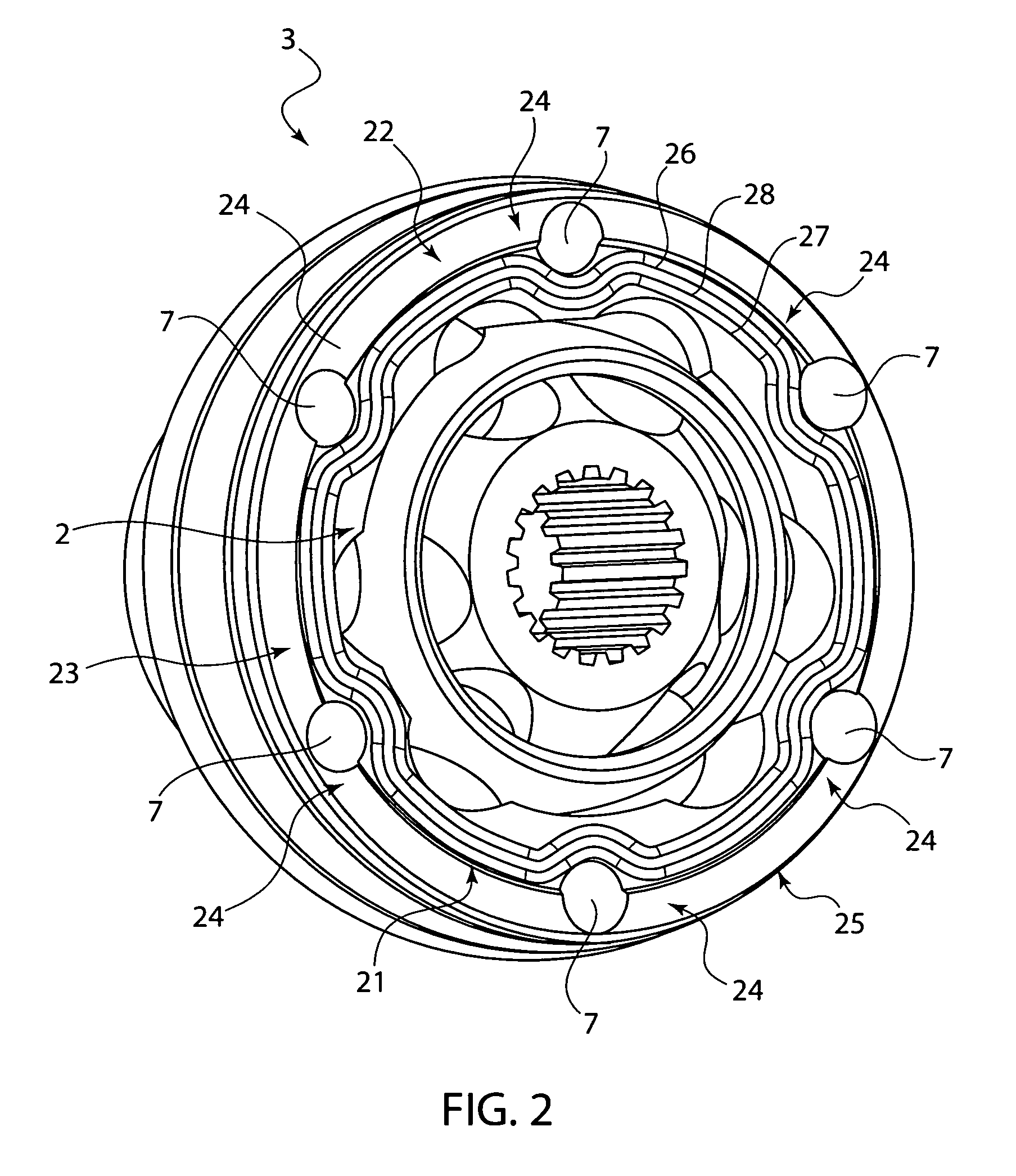Two-lip rubber seal with reinforcement
a two-lip rubber and reinforcement technology, applied in the direction of engine seals, yielding couplings, engine components, etc., can solve the problems of slipping of slipping into the inner region, and slipping up to 0.3 mm of the housing lid relative to the outer ring, so as to improve the resistance to slipping
- Summary
- Abstract
- Description
- Claims
- Application Information
AI Technical Summary
Benefits of technology
Problems solved by technology
Method used
Image
Examples
Embodiment Construction
[0027]Referring now in detail to the drawings, FIG. 1 shows a cardan shaft 1 according to the invention, which comprises an outer ring 3 that accommodates a joint 2 and is configured as a corpus element. On both sides, outer ring 3 is closed off by a lid 4 on the transmission side and a lid 5 with joint cuff 6 for passing through the power take-off shaft (not shown here). The two lids 4 and 5 are attached to outer ring 3 by screw connections, which pass through outer ring 3 through a screw channel 7, and are braced relative to the ring. Outer ring 3 has circumferential seals that lie within screw channel 7, viewed relative to joint 2, which comprise a seal 10 between lid 4 on the transmission side and the contact surface of outer ring 3, and a seal 11 between lid 5 on the power take-off side and outer ring 3, on the contact surface. The surfaces of outer ring 3 and of lid 4 or 5 which run parallel to one another in the sealed state and between which seals 10 and 11, respectively, ar...
PUM
 Login to View More
Login to View More Abstract
Description
Claims
Application Information
 Login to View More
Login to View More - R&D
- Intellectual Property
- Life Sciences
- Materials
- Tech Scout
- Unparalleled Data Quality
- Higher Quality Content
- 60% Fewer Hallucinations
Browse by: Latest US Patents, China's latest patents, Technical Efficacy Thesaurus, Application Domain, Technology Topic, Popular Technical Reports.
© 2025 PatSnap. All rights reserved.Legal|Privacy policy|Modern Slavery Act Transparency Statement|Sitemap|About US| Contact US: help@patsnap.com



